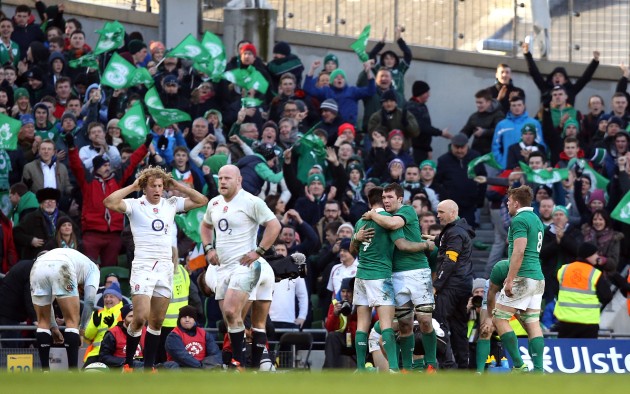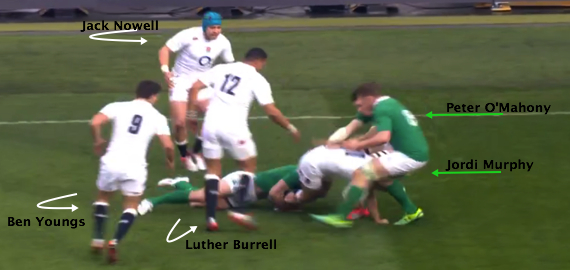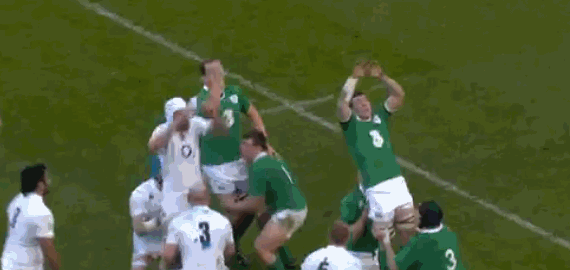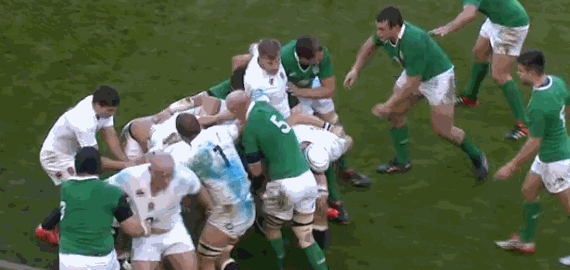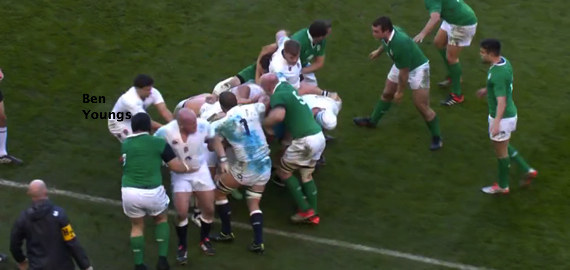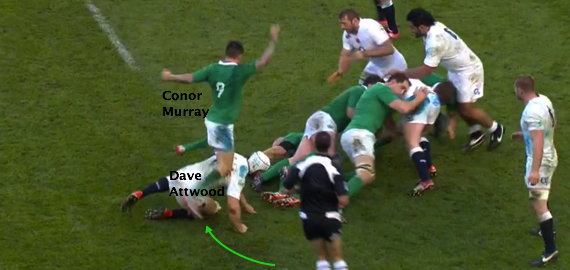As Ireland marched on in their Six Nations title defence with a third straight win, we analyse six momentum shifts that characterised their 19-9 defeat of England
A 10-point defeat away to a side that has now won their last 10 consecutive Tests. That statement represents the stark outcome for England on a soggy Sunday in Dublin.
However, for a team holding ambitions of silverware who demand high standards, a 19-9 reverse against Ireland would have stung rather more. For a start, there was little of the vim and vigour that helped overturn Wales. As Stuart Lancaster admitted, the visitors “hardly fired a shot” in the first half.
Secondly, moments of indiscipline stunted England’s progress. Given this squad has travelled through a number of chastening lessons – 2013’s 30-3 loss at the Millennium Stadium, numerous Southern Hemisphere close-shaves – inexperience cannot be rolled out as an excuse any more.
Here is a run-down of six moments that crystallised a tough afternoon across the Irish Sea.
Ireland 0-0 England, 1 minute: Ford hunted
It was not in the least bit surprising that the tactical kicking of Ireland half-backs Conor Murray and Jonathan Sexton was spot on. What was extra impressive was the hosts’ industry off the ball, not just chasing hard but also making sound decisions and effective interventions at the ensuing contact area.
Here, as Tommy Bowe tackles George Ford, both Jordi Murphy and Peter O’Mahony are on the scene. They keep their balance and drive over the ball in an unopposed counter ruck as Luther Burrell, Jack Nowell and Ben Youngs circle back behind the back foot:
The ball is forced out and Devin Toner pounces to complete an early turnover, which eventually resulted in Ireland’s first three points. The Leinster lock stood tall to finish the opening quarter too.
Ireland 6-3 England, 22-24 minutes: Toner steals then spoils
On the BBC’s live coverage, Sir Clive Woodward laboured the rather redundant message that Chris Robshaw should have opted for a kick at the posts rather than to touch at this point. It was an easy argument to make in retrospect. England’s maul has been functioning well this season, so going for the try seemed a sound decision.
As it was, Toner simply made a sound read and got up above James Haskell, with the help of an fine lift by O’Mahony and Sean O’Brien. A reverse angle depicts the situation well:
As Murray hacks into touch, the danger is not over. But then Toner and O’Mahony intervene once more. Another great read allows them to crowd out Dave Attwood, making the set-piece messy before O’Brien charges away:
From a lineout in this area of the field about five minutes previously, Ireland did not throw anybody up – attempting to outfox England by not engaging their maul. Now, they go the opposite way. They shoot up two pods with the aim of creating chaos:
It works brilliantly. They steal the lineout and quell a prolonged England attack.
Ireland 6-3 England, 27 minutes: Exit uncertainty
Having survived an extended period of pressure thanks to Billy Vunipola‘s ruck turnover, England need a sturdy set-piece and a proper clearance. However, their exit strategy is derailed. Ireland do well to muscle the visitors’ maul towards touch, putting Youngs in a cul-de-sac.
Close to the chalk, the angle is very awkward for the scrum-half to kick himself. However, the pass is already a difficult one and, spinning 180 degrees onto his left hand, he gives Ireland a chance to speed into Ford’s face:
There is still a chance to save the situation, even as Ford ships on hurriedly to Burrell. Two passes, either to Alex Goode or Jonathan Joseph, are on:
Burrell errs on the side of caution with Robbie Henshaw and Payne rushing up, though. He is enveloped, Ireland win a penalty and are six points ahead again.
Ireland 9-3 England, 46 minutes: Soft concession
Shipping 13 penalties to Ireland’s eight was never likely to end well. Indeed, this is an example of an avoidable infringement.
Attwood was tireless in defence and topped the England tackle-count with 19. In this case though, he makes the challenge on Paul O’Connell but does not roll away quick enough or in the right direction.
He impedes Murray, who trips obviously enough to alert Joubert and cannily win a penalty. Cynical gamesmanship or sheer intelligence – either way, Sexton made it 12-3:
As well as indiscipline, this also highlights the disparity in ruck speed between the teams. On defence, Ireland piled in and sapped the pace of England’s phase-play to a near stand-still. We will get onto this in more depth later.
Conversely, thanks to consistently strong clear-outs and ball presentation, Murray buzzed around and dictated the cadence of his side’s attacks. As such, Ireland could come forward with more conviction.
Ireland 12-3 England, 51 minutes: More chase and counter
This passage of play ended with Henshaw’s match-clinching try. Even so, as with so much in this game, it began with Sexton’s vision. Out of the corner of his eye, he sees Watson has crept slightly narrow and that Simon Zebo has held his width:
The kick is nicely weighted, turning Watson. Zebo follows up to make a brawny tackle and, once more, the chasers are disciplined. Payne, Rob Kearney and Murphy leach on to one another, march beyond the ball and force the turnover:
This is a copy-book piece of counter-rucking, epitomising Ireland’s technical excellence under pressure and foreshadowing their pivotal, potentially tournament-winning try.
Ireland 19-6 England, 60 minutes: Immoveable Moore
To their immense credit, England did not give up on this game in the third quarter though things were slipping away rapidly. A Ford penalty cut the deficit and they began to get through a few phases. However, this defensive set from Ireland extinguished even the most distant hope.
Here, the hosts resemble England at their most disruptive. Careering off the line, Cian Healy occupies Haskell’s eyeline and fells the Wasp behind the gain-line:
Tommy O’Donnell assists the tackle and Martin Moore latches on. At 123 kilograms, there is no moving him:
Throughout the match, Ireland’s defensive breakdown was exceptional. Both legally and illegally, they ensured their opponents stagnated.
England now end the Six Nations with two Twickenham ties against Scotland and France. Two wins are a bare minimum. If they achieve that, they retain a title chance.
While this weekend will hurt, Lancaster must regroup the troops as quickly as possible. A trophy is still a possibility. What a World Cup launchpad that would be.





